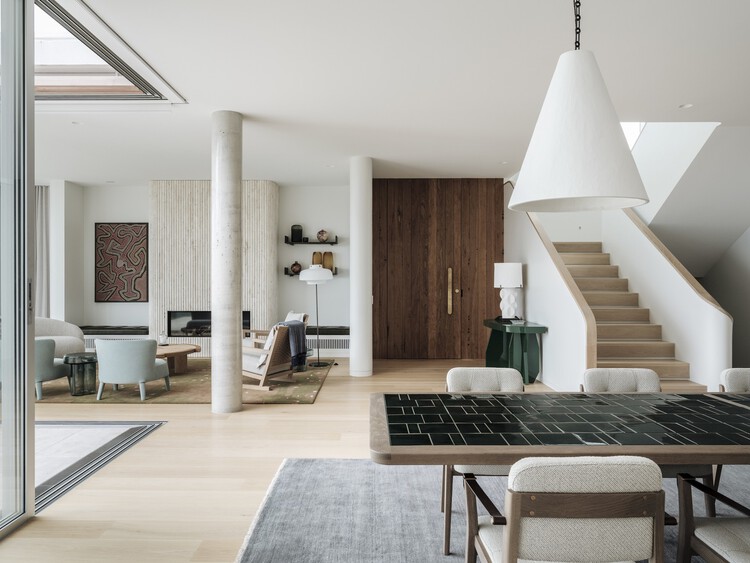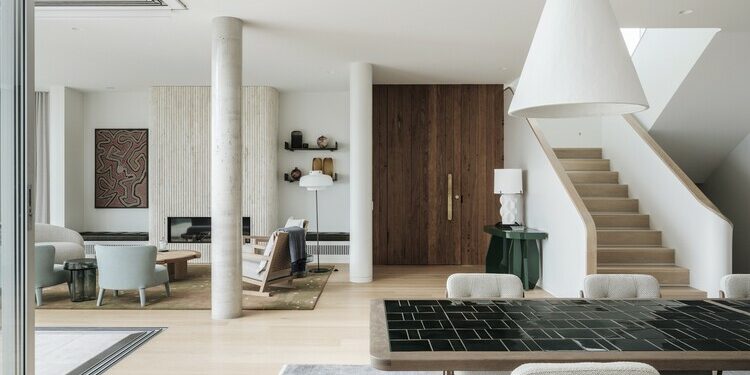Architects and interior designers play pivotal roles in shaping our built environment. From conceptualizing innovative designs to bringing them to life, these professionals collaborate seamlessly to create spaces that are both functional and visually appealing. Let's delve into the intricate world of architecture and interior design to uncover the magic behind their craft.
 .
.

Roles and Responsibilities
Architects and interior designers play crucial roles in shaping the aesthetics and functionality of spaces, but they have distinct responsibilities within a project.Architects
Architects are primarily responsible for designing and planning the overall structure of a building. Their roles include:- Creating architectural drawings and blueprints
- Ensuring compliance with building codes and regulations
- Coordinating with engineers and contractors
- Overseeing construction and project management
Interior Designers
Interior designers focus on enhancing the interior spaces of a building to meet the client's needs and aesthetic preferences. Their responsibilities involve:- Selecting furniture, fixtures, and finishes
- Creating color schemes and layouts
- Collaborating with architects and contractors
- Considering functionality and ergonomics
Collaboration between Architects and Interior Designers
Architects and interior designers often collaborate closely to ensure a cohesive and harmonious design. They work together to:- Integrate architectural elements with interior design concepts
- Coordinate spatial layouts and circulation patterns
- Select materials and finishes that complement the overall design
- Enhance the functionality and aesthetics of the space
Education and Training
To become an architect or an interior designer, individuals must undergo specific educational requirements and training programs tailored to each profession. Here, we will delve into the details of the educational paths for architects and interior designers, highlighting the differences in their training programs and the specialized skills they acquire through their education.Architect
Architects typically complete a Bachelor's degree in architecture, which usually takes five years to complete. Following this, aspiring architects must complete a professional Master's degree in architecture, which can take an additional 1-5 years depending on the program and the level of specialization desired. It is important to note that in order to become a licensed architect, individuals must also complete a certain amount of supervised work experience and pass the Architect Registration Examination.Interior Designer
On the other hand, interior designers typically pursue a Bachelor's degree in interior design or a related field, which typically takes 4 years to complete. Some interior designers may also choose to pursue a Master's degree to further enhance their skills and knowledge in the field. While interior designers are not required to obtain a license in all states, many choose to become certified through the National Council for Interior Design Qualification (NCIDQ) by passing a rigorous exam.Specialized Skills
Through their education, architects acquire specialized skills in architectural design, structural engineering, building materials, and construction techniques. They also develop expertise in creating functional and aesthetically pleasing spaces that meet the needs of their clients while adhering to building codes and regulations.Interior designers, on the other hand, focus on space planning, color theory, furniture design, and material selection. They develop skills in creating cohesive and visually appealing interiors that reflect the client's style and preferences. Interior designers also have a deep understanding of lighting, textiles, and spatial arrangements to create harmonious living and working environments.Overall, both architects and interior designers undergo rigorous educational training to develop the specialized skills necessary to excel in their respective fields and bring their clients' visions to life.Design Process
When it comes to the design process, architects and interior designers follow a systematic approach to ensure the successful completion of a project. While architects focus on the structural elements and building codes, interior designers prioritize aesthetics and functionality to create a harmonious living or working environmentArchitects’ Design Process
Architects typically follow a step-by-step design process that includes:- Initial Consultation: Meeting with the client to understand their needs, preferences, and budget constraints.
- Schematic Design: Developing initial sketches and layouts to explore different design options.
- Design Development: Refining the chosen design concept and developing detailed drawings and specifications.
- Construction Documentation: Creating comprehensive drawings and documents for construction permits and contractor bids.
- Construction Administration: Overseeing the construction process to ensure the design intent is realized.
Interior Designers’ Approach to Space Planning
Interior designers approach space planning by:- Assessing the available space and understanding the client's lifestyle and needs.
- Creating a functional layout that optimizes the use of space and enhances the flow of movement.
- Selecting appropriate furniture, fixtures, and materials to complement the design aesthetic.
- Considering lighting, acoustics, and other environmental factors to create a comfortable and inviting space.






